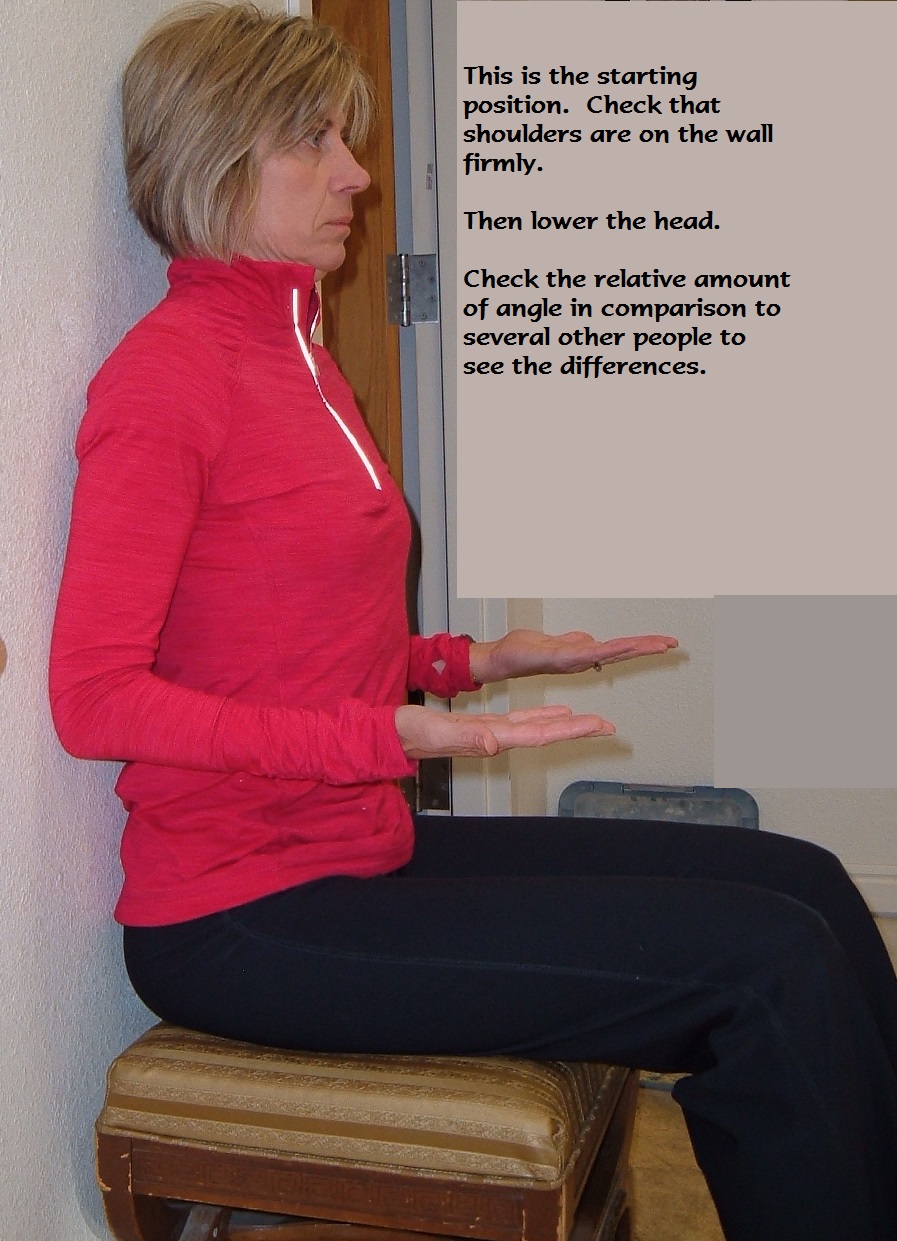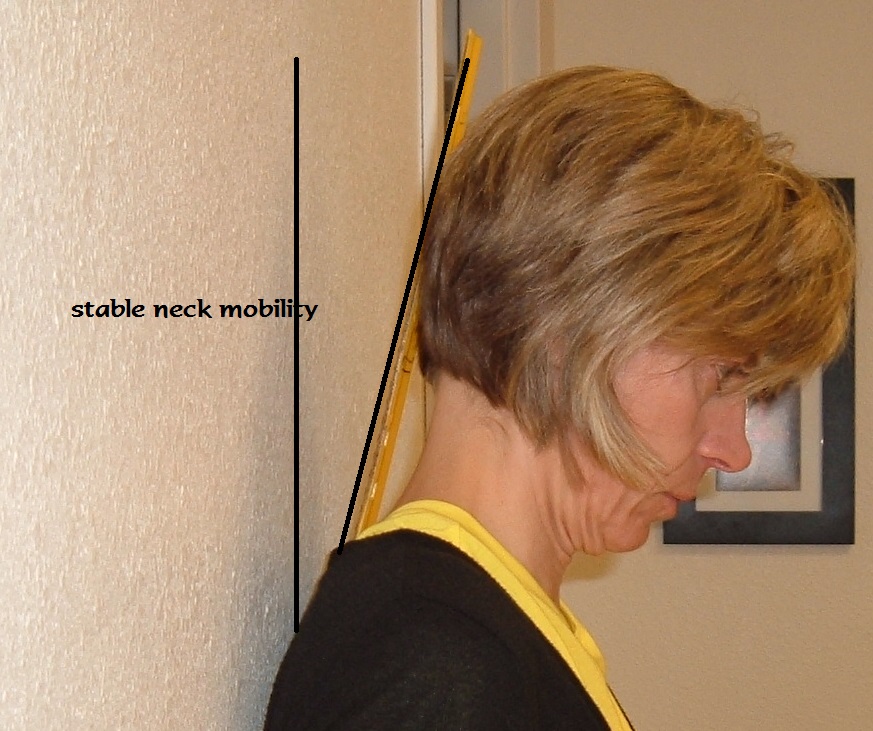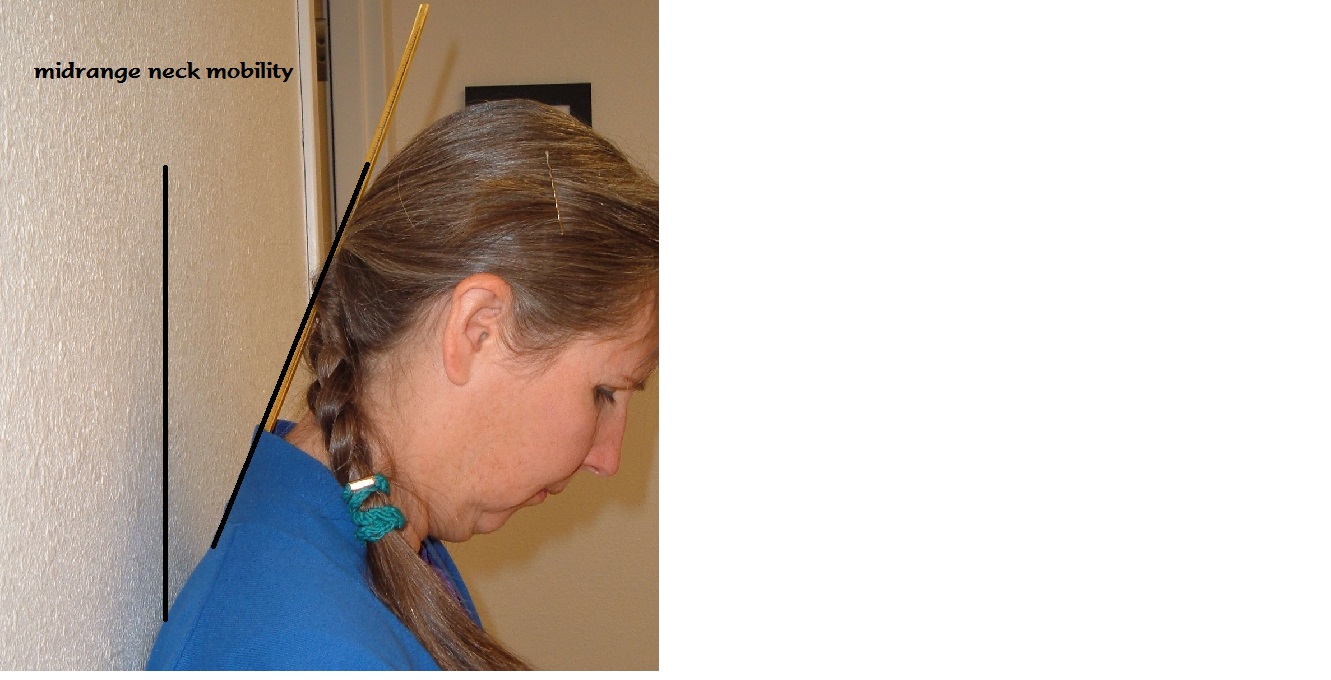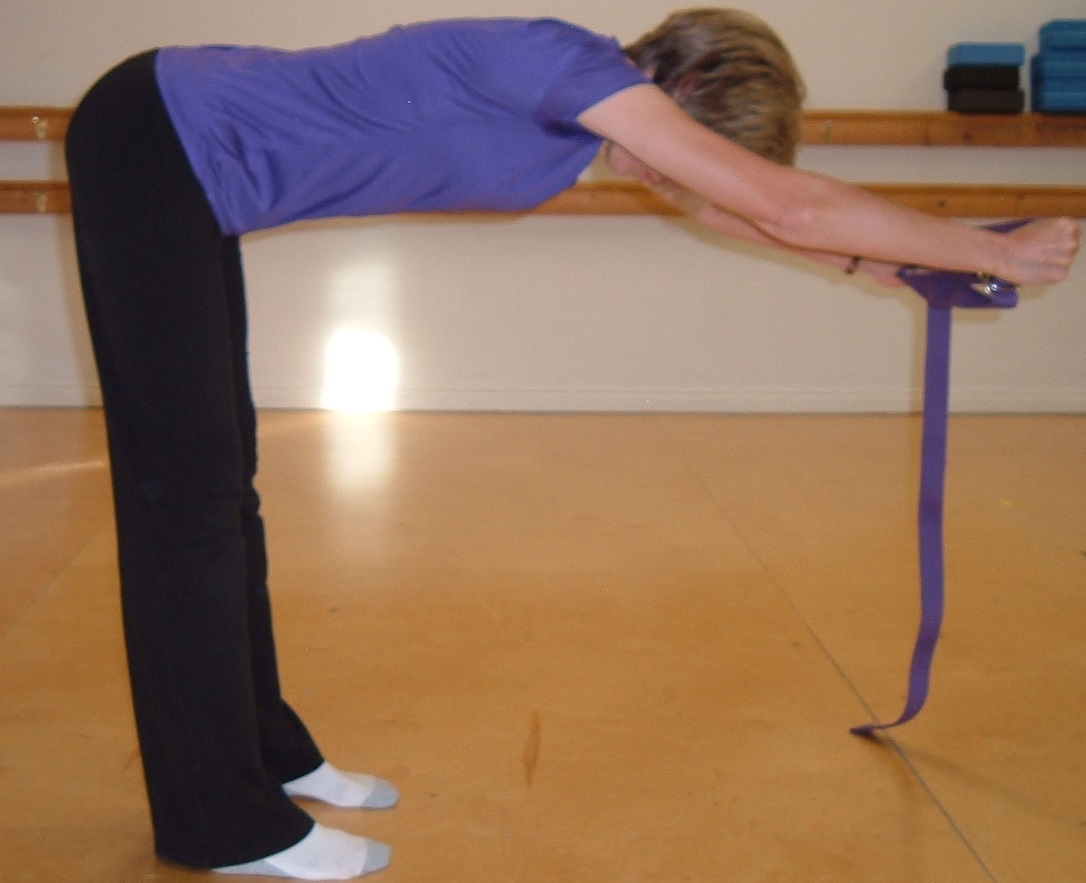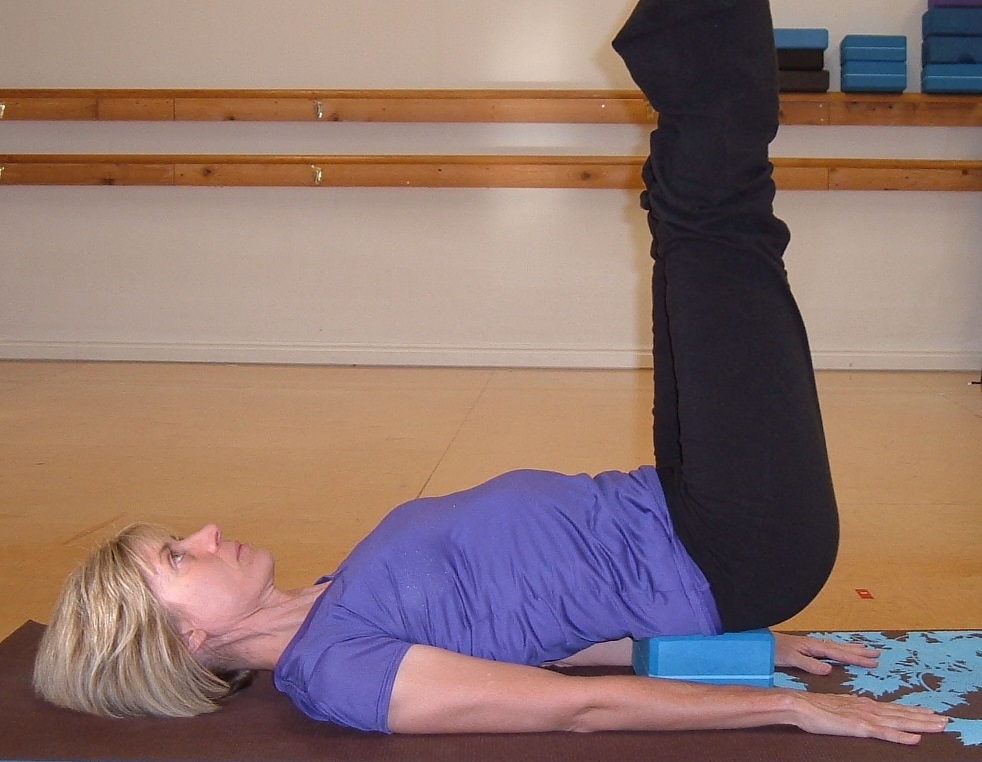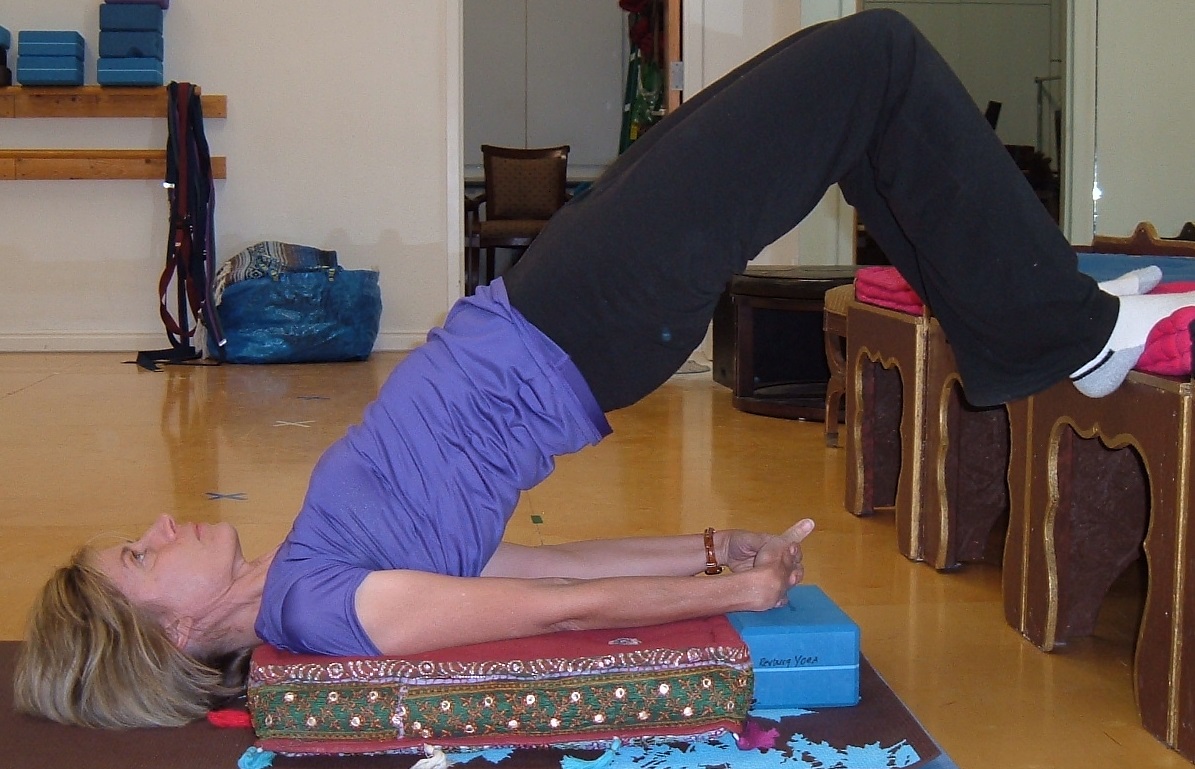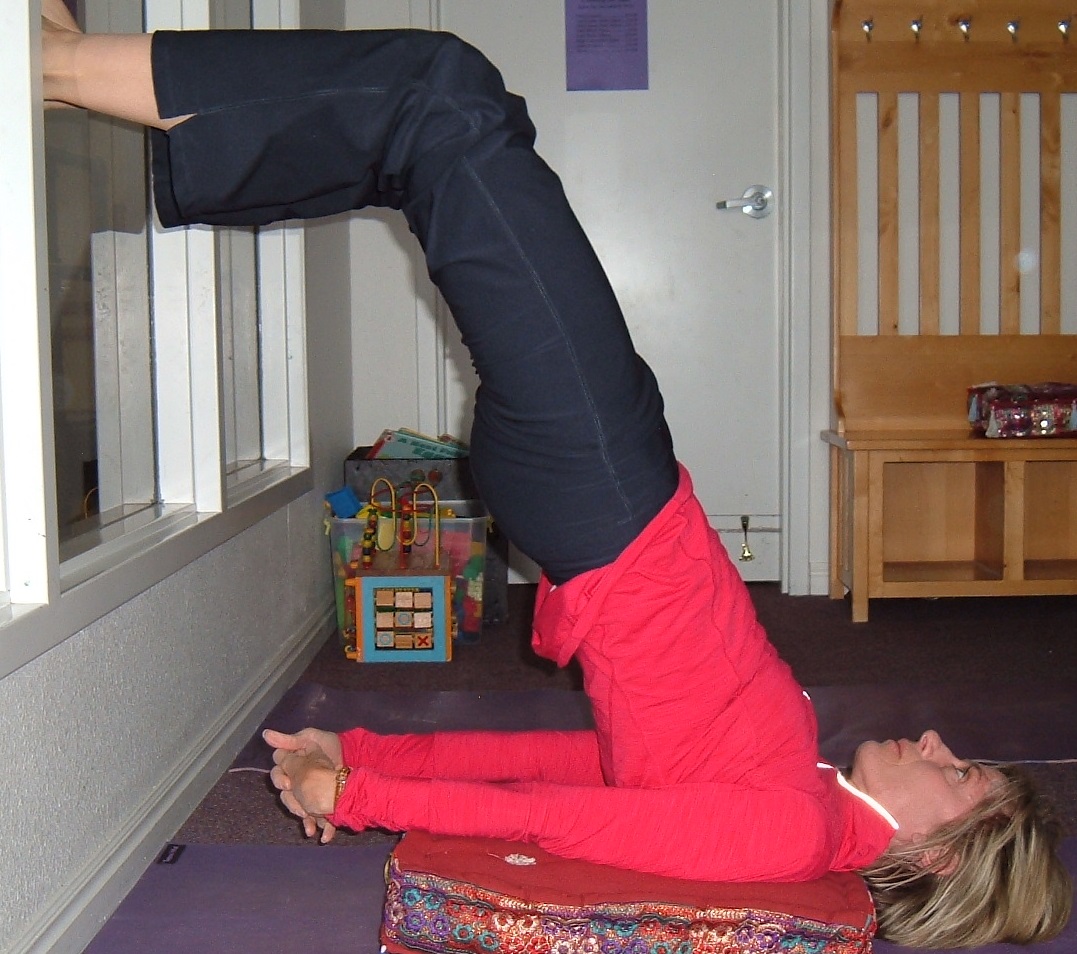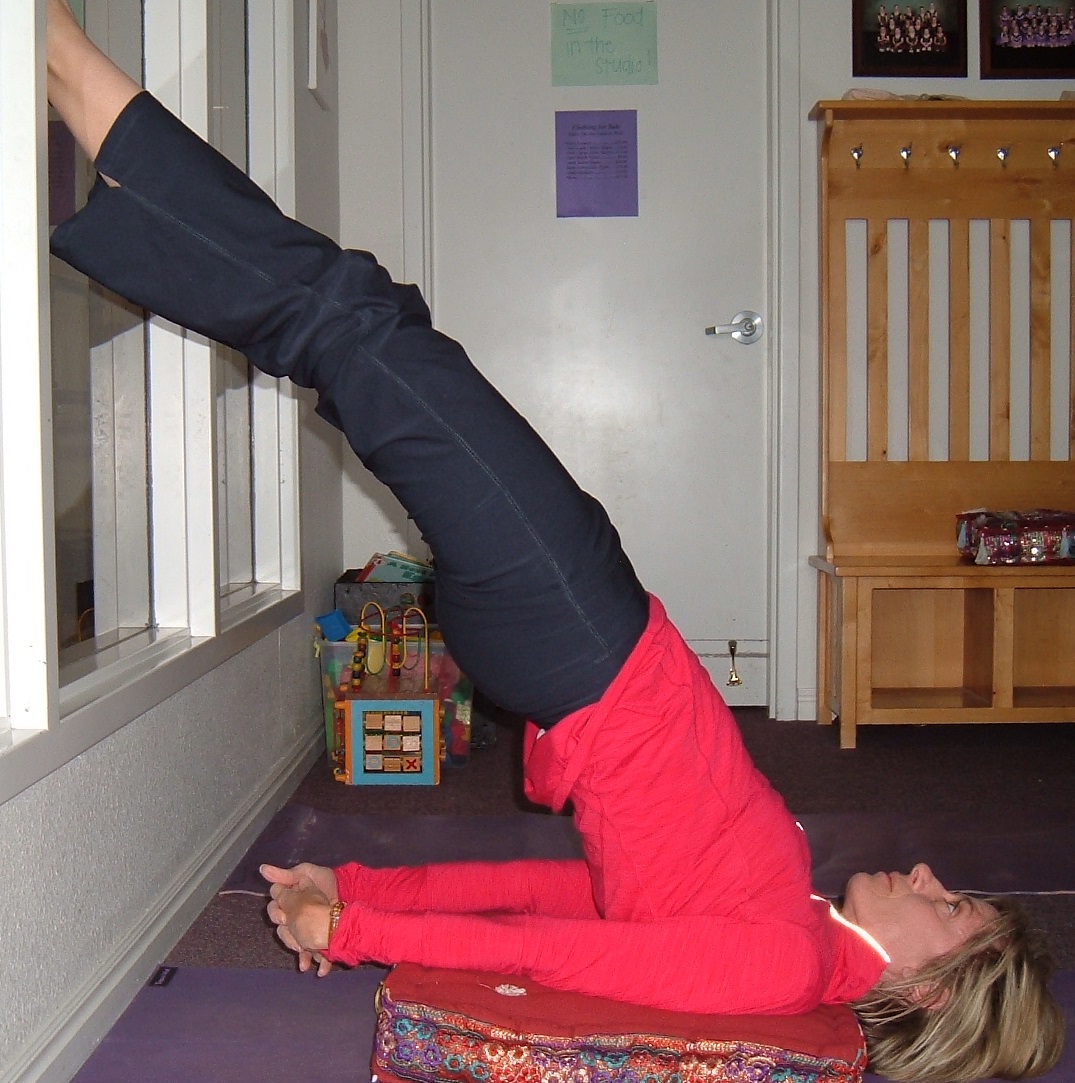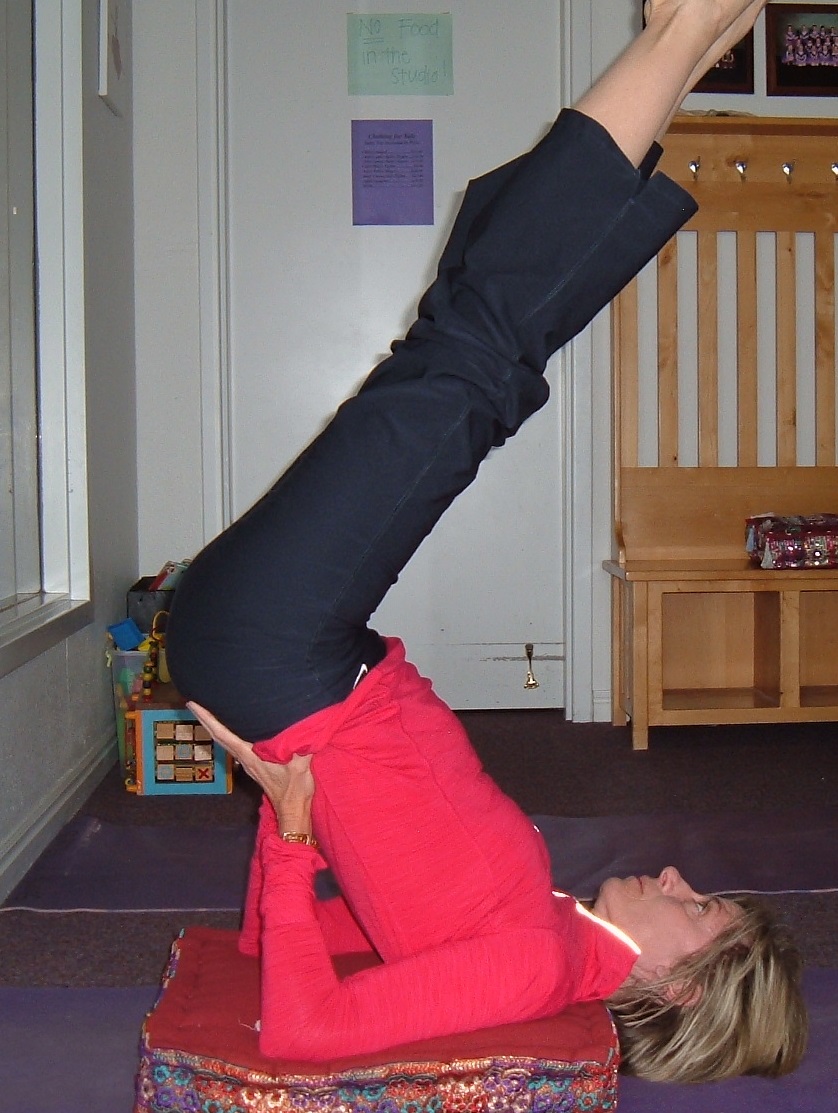We are particularly looking at the neck mobility in this post because that determines how thick the pad needs to be for a safe and comfortable shoulderstand.
We have previously looked at shoulderstand and plough and this is just additional information.
The assessment needed in the neck is how far the head can drop. Have the student sit on a stool or chair so the whole back can be flush with the wall. Bent elbows push back against the wall and shoulderblades firmly stay on the wall. The starting position is the back of the head against the wall. Student then drops head until it stops normally. No force or pushing. Its just a comparison between people as to how big the angle is.
Those with stable mobility need 4-5 inches of firm solid padding under the shoulders. The midrange students could be comfortable with less and this varies for each person. Basically each person needs to find their personal shoulderstand.
The first evaluation a student would make to decide if a shoulderstand is appropriate is to ask herself that very moment if she has any headache, backache or neck pain, or is recovering from any injury in these ares. If so, then today is not the day for shoulderstand or plough. However, there are two varieties of inversions that might still feel just fine.
Another assessment is if the half dog position with arms overhead can be held comfortable for at least 3 seconds.
This next picture shows an assessment of the range of motion in the shoulders to determine what is best for arms in a shouldstand.
The safest version of shoulderstand that is appropriate for just about everyone is with the block under hips for a supported bridge. The second is to straighten legs with feet up to ceiling. This could be done against a wall if desired. The shoulderblades could be squeezed together a little to create some action.
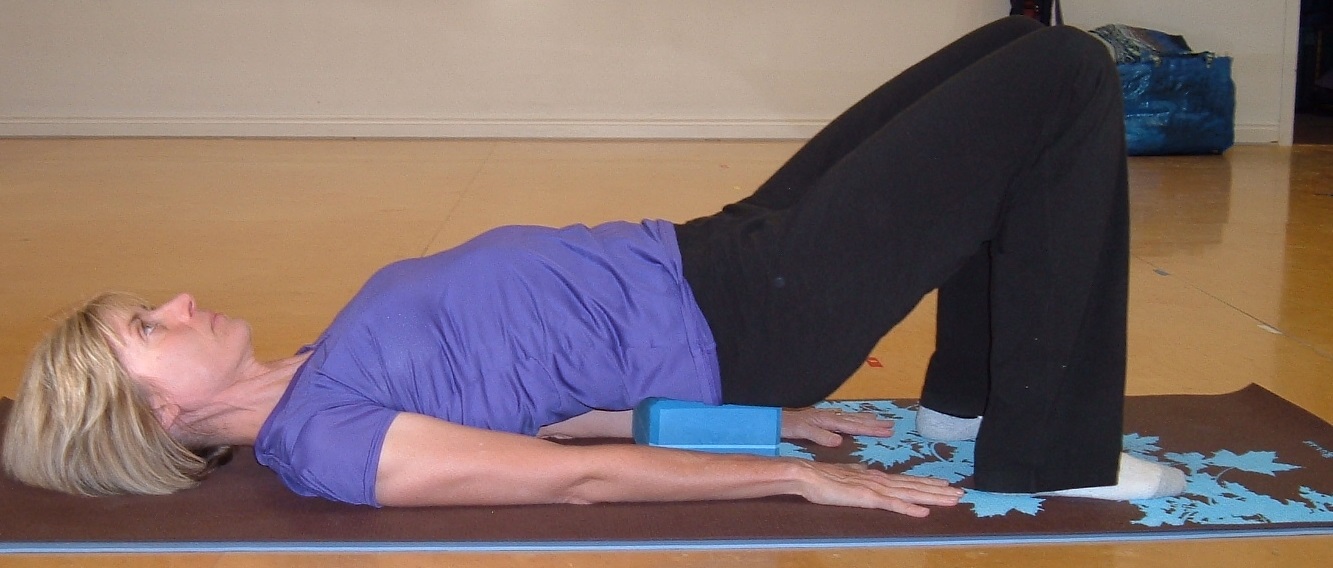
Here are detailed description of working with the further versions of shoulderstand:
You can use a chair or wall to help you get into the pose. Set your blankets up a foot or so from the chair or wall (the exact distance depends on your height: Taller students will be farther from the wall, shorter students closer). Sit sideways on your support (with one side toward the chair or wall) and, on an exhalation, swing your shoulders down onto the edge of the blanket and your legs up onto the wall.
If using the chair, rest your legs on the chair and then begin to move your feet to the edge of the chair for push off. Bend your knees to right angles, push your feet against the chair or wall and lift your pelvis off the support.You can use a block under pelvis to assist lift off if working with the wall. Knees start bent. Gradually begin to walk your feet higher up on the wall with soles firmly planted on the wall. When your torso and thighs are lifted you can begin to bring your hands up to the pelvis and lean your pelvis back into the support of your hands. Begin to straighten legs.
Shoulderstand –YJ
Walk your hands up your back (toward the floor) without letting the elbows slide too much wider than shoulder width. A strap will help with this. Allow knees to bend as you inhale and lift your bent knees toward the ceiling, bringing your thighs in line with your torso and hanging the heels down by your buttocks. Press your tailbone toward your pubis and turn the upper thighs inward slightly. Finally inhale and straighten the knees, pressing the heels up toward the ceiling. When the backs of the legs are fully lengthened, lift through the balls of the big toes so the inner legs are slightly longer than the outer.
Soften the throat and tongue. Firm the shoulder blades against the back, and move the sternum toward the chin. Your forehead should be relatively parallel to the floor, your chin perpendicular. Press the backs of your upper arms and the tops of your shoulders actively into the blanket support, and try to lift the upper spine away from the floor. Gaze softly at your chest.
As a beginning practitioner stay in the pose for about 30 seconds. To come down, exhale, bend your knees into your torso again, and roll your back torso slowly and carefully onto the floor, keeping the back of your head on the floor.
For instructions on options for a counterpose for shoulderstand, go HERE.

